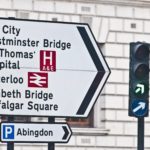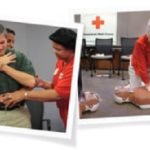Senior Tsunami Impacts Hospital Signage
Hospitals eye senior-friendly signage to accommodate aging Baby Boomers.
Healthcare Design Magazine, March 2015: “Good wayfinding is always an essential hopsital design component, but it’s particularly so for older patients whose physical and cognitive abilities may be compromised. This includes signage and directional cues presented in multiple modalities, colors, languages, and symbols, so that seniors can more easily read and process the information,” says Dorothy Lloyd, director of the global healthcare practice at HOK San Francisco.
At the same time, Tim Barnhill, principal at Hord Coplan Macht, Baltimore, cautions against too much signage, which can be over-stimulating and confusing for some older adults. To ensure that signage works optimally, Barbara Miszkiel, principal at Stantec Architecure, Toronto, recommends that smaller signs display a font that’s at least three-quarter-inch high, while larger signs intended to be viewed from afar be printed with a font at least one and thee-quarter-inch high. “In addition, light letters on dark, matte-finish backgrounds are most easily visible for the aging eye,” she says.
Furthermore, because older patients tend to look with more of a downward gaze, Miszkiel says to mount signs at an intermdiate height above handrails, as opposed to at the top of door frames.
To read more recommendations on how healthcare desing efforts are responding to the “Senior Tsunami” go to healthcaredesignmagazine.com and view the digital editionof the March 2015 issue. and to review a case study of a People Signs hopsital wayfinding projects, click here.




